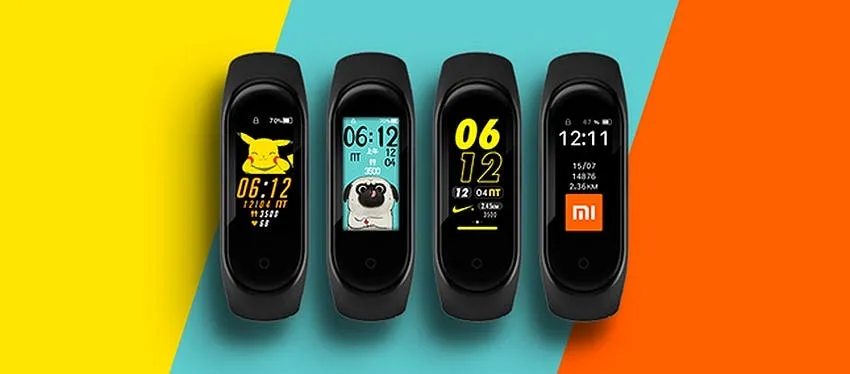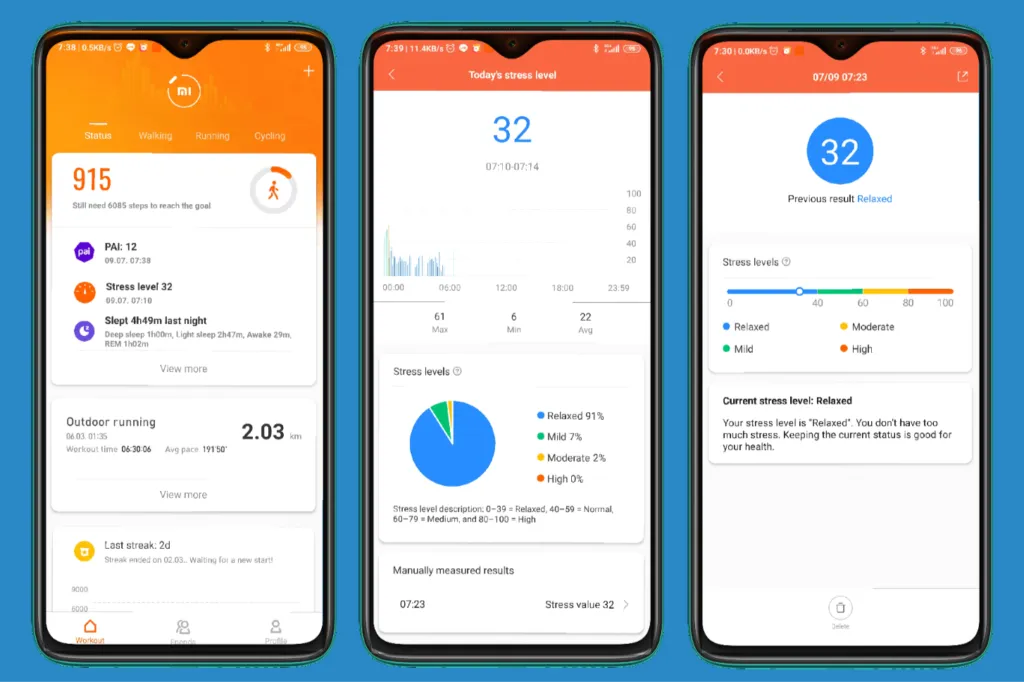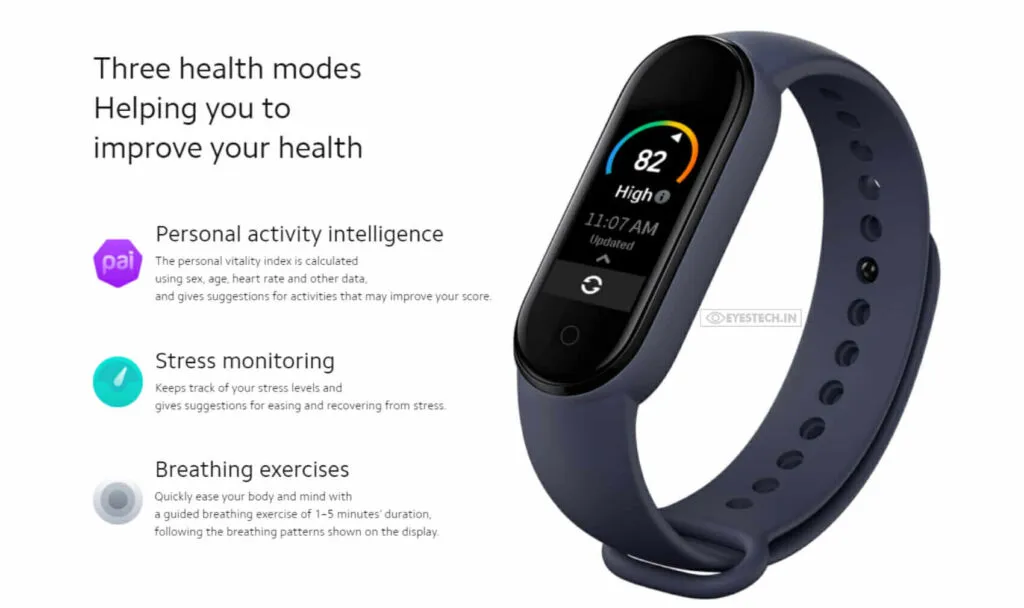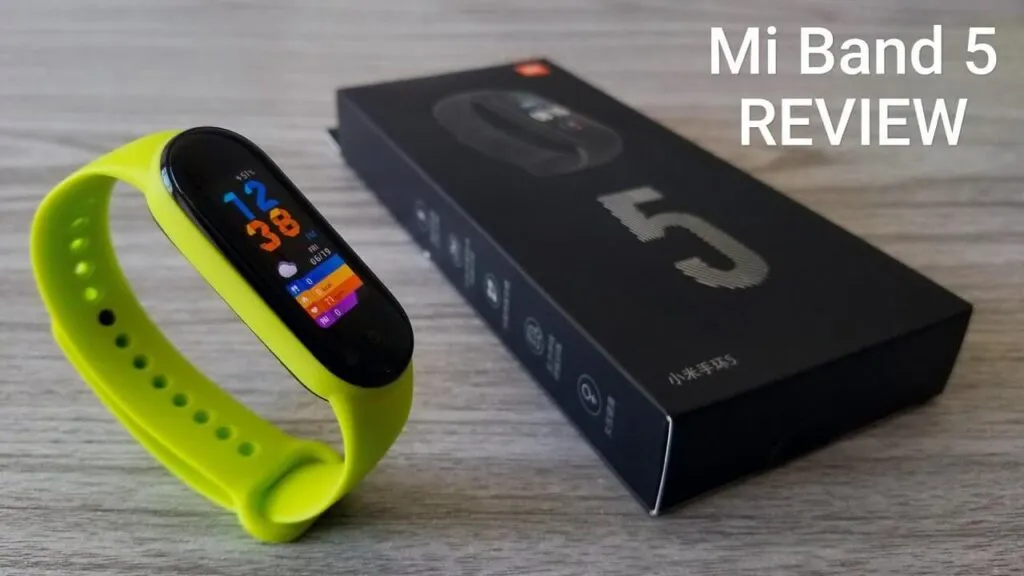Mi Band 5(or Mi Smart Band 5), picks up the baton from its predecessor in this healthy lifestyle marathon. How does it behave?
Xiaomi launched Mi Band 4 in June 2019, arriving as a big upgrade over the Mi Band 3 thanks to its color display and other additions.
The fifth smart bracelet, further improves some features and adds others, improves the battery, and increases the display size.
Table of Contents
Index
- Display
- UX and UI
- Sport
- Step monitoring
- Sleep monitoring
- Stress monitoring and breathing exercises
- PAI
- Battery and charging
- Conclusion
Mi Band 5 review
Display
Xiaomi only added marginal improvements to the display, it is slightly larger (1.1 ″ vs 0.95 ″) brighter, up to 450 nits. Mi Band 4 performed decently in the sunlight andMi Band 5does even better for that purpose. You will have no problem reading the display in sunlight.
The biggest change is the ability to set custom wallpaper on the Mi Band 5’s dial. The previous Mi Band supported more official watch faces and unofficial watch faces which could be loaded to bring more customization.
With Mi Band 5, you can create a custom watch face from the Mi Fit app, which allows you to choose between different clock and information layouts, then change the background (can even be your selfie if you want) and change the font color.
And of course, the unofficial watch faces can still be installed, although you may need to pay attention to the changes made by Android 10 and 11 with Scoped Storage (not Xiaomi’s fault in any way).

You can even change the watch faces from the strap itself, and some of the preloaded watches faces even have customizations as to what information they can display. There are even animated official dials. Overall, there’s a lot more customization possible in addition to whatever Mi Band 4 offers, and that’s always a good thing.
Clear improvement for the type of charging compared to the previous model of the wearable which now uses a magnetic charging pin. With Mi Band 5, it is no longer necessary to remove the module from the silicone strap – just bring the magnetic charger close to the charging pin and it clips itself into place.
The other end of the magnetic charger is still USB type A so you can connect it both to your PC and your charger.
One problem with these changes, namely the larger display and the move to a magnetic charging design, is that the bands for the Mi Band 4 and its predecessor are no longer compatible with the Mi Band 5.
The look remains understated and understated and brings with it some key changes that overall improve the wearable experience. Remember, this fitness tracker is in the cheaper segment, so what you get for the price remains commendable.
UI and UX Mi Band 5
Like all fitness trackers, and the Xiaomi one is no exception, they need a smartphone for complete management and, in particular, the Mi Fit app with which you will also be able to connect other devices such as the smart scales of the Chinese company (the review of the Mi Body Composition Scale 2 will also arrive short).

Mi Band 5 adds several new features to the functions of the fourth model, such as the ability to record more sports, the ability to better monitor sleep and even monitor mid-day naps, track menstrual cycles, help you relax with exercises breathing, give an indication of how stressed you are, check your phone’s camera shutter, and even offer you personalized activity tracking in the form of Personal Activity Intelligence (PAI).
Sport
Mi Band 5 now comes with monitoring for:
- Yoga
- Tapis Roulant
- Outdoor running
- Cycling
- Exercise bike
- pool
- jumping rope
- Free exercise
- Rowing machine
- elliptical
These sports modes should be sufficient for the large mass of average users who are just starting their fitness journey. Keep in mind that the Mi Band series does not have built-in GPS, so for activities involving route tracking, Mi Band relies on GPS information collected via the Mi Fit app on the phone.
Step tracking
The monitoring itself is fine, compared to the Huawei Watch GT 2 smartwatch it seems to provide fewer steps, however “good” when the price of the product is taken into account.
If you need devices that can provide more accurate tracking, you need to spend over five times the price of the Mi Band 5.
Sleep monitoring
As for sleep tracking, my personal experience dictates that the Mi Band 4 is better at tracking sleep than the Mi Band 5, despite the new band claiming to be equipped with updated sleep analysis technology.
From personal experience, Mi Band 4 is better for sleep tracking. Mi Band 5 also tracks REM status for sleep, so if monitoring is important to you, you should prefer Mi Band 5 only in this narrow sleep monitoring context.
Stress monitoring and breathing exercises
Another standout feature of Mi Band 5 is the addition of Stress Monitoring and Breath Training, sleep monitoring, and breathing exercises respectively.

These features are rather self-explanatory. In my daily use so far, I haven’t received any notifications regarding excessive stress. The Band 5 has recorded moderate stress on some occasions, also in this case the values are very different on my Huawei smartwatch which instead did not register high-stress values as shown on some occasions by the wearable Xiaomi.
Xiaomi notes that this data is calculated via HRV (heart rate variability) and is for reference only, so I would advise readers not to rely too much on it.
Breathing exercises are something I have found helpful. Basically, you can set 1-5 minutes of training for relaxed breathing. The fascia then guides you through the inhalation and exhalation periods through an animation on the display and a short vibration when the state needs to be changed.
At the end of the exercise, the band shows your starting and ending heart rate, giving you an idea of how well you have calmed down.
PAI – Personal Activity Intelligence
This is a new addition, PAI uses heart rate data collected during exercise to provide a score. The total PAI score is based on a rolling window of 7 days and the goal is to maintain a PAI score of 100 or more, which has apparently been shown to provide the greatest health benefits.

The 100 PAI goal was chosen as a normalized value, but what each person has to do to achieve it is apparently unique to them too. As you get fitter, it also becomes inherently harder to reach 100 PAI, which makes it adequately challenging for all levels.
Battery and charging
Mi Band 5 charges easily, charges quickly, and lasts for two weeks on one charge. All Mi Bands have provided excellent battery life so far and the Mi Band 5 is no exception.
For wearables, anything over a 7-day life cycle is considered “good enough”, as it can be assumed that there will be at least an opportunity to charge the watch once a week.
Mi Band 5 has a larger battery, but also a slightly larger and bright enough display, plus there are more functions. Xiaomi claims up to 14 days of battery life and up to 21 days if you use the band in power-saving mode.
To give a figure, I have been using it continuously for 10 days and the charge is at 41%. Charging the watch takes between 1.5 / 2 hours and you may want to consider quick 5-10 minute recharges every day.
Conclusion
Xiaomi Mi Band 5 improves on the Mi Band 4. Just when you thought that the company had delivered the product with the best value for money, another one comes out that raises the level even further.
When it was launched, the official price increased slightly compared to the previous model as well as Mi Band 6 still costs a few euros more, after all, the characteristics improve and the price increase is inevitable but still small.
However, we must keep in mind that it is a fitness tracker for beginners, a well-rounded product, improved in the right places, and with additional features.

Mi Band 5 is a wearable device that makes bland fitness tracking convenient, even just the daily walk.
The only downside to this device is its lower reliability in sleep tracking, which the company could fix via software updates.
If you are just looking for motivation for your first week of running, the Mi Band 5 is an excellent purchase for a healthier lifestyle and a great option to make a welcome, inexpensive gift and also to make a good impression.
If you want to save a little bit, you can safely choose this tracker instead of the latest model, especially if you are about to buy one for the first time. If you have the Band 4 and want to change then upgrade to the Mi Band 6 equipped with the improvements brought to the fifth version and add a few more like a larger display and battery.
Xiaomi Mi Band 5: Specifications
Dimensions and weight: 47.2 x 18.5 x 12.4 mm
Standard weight: 11.9 g
NFC: 12.1g
Materials: polycarbonate
Wrist strap: silicone
Compatibility: Android, iOS
SoC: not specified
RAM/Storage: 512KB of RAM, 16MB of storage
1.1 inch AMOLEDscreen(126 x 294 px) 450 nits
Bluetoothv5 BLE connectivity
GPSAbsent
Sensors
- PPG Heart rate sensor; IR detection only on the NFC variant
- 3-axis accelerometer
- 3-axis gyroscope
- Barometer
- Proximity sensor
NFCpayments
Battery125 mAh
Water resistance5ATM or 50 meters for up to 30 minutes in freshwater
If you want to stay up to date,follow us onInstagram,Twitter.If you want to receive support for any questions or problems, join ourFacebookGroup or contact us onInstagram,Gmail,Linkedin, etc

